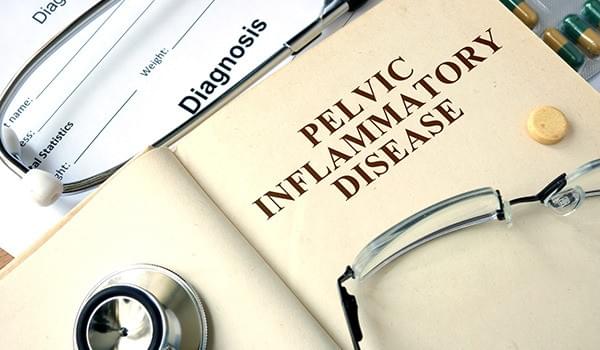Comprehensive Insight into Pelvic Inflammatory Disease: A Guide for Women’s Health

Pelvic Inflammatory Disease (PID) is a critical health issue in the field of women’s reproductive health, affecting a significant number of women worldwide. This extended guide aims to provide a thorough understanding of PID, its implications, diagnosis, treatment, and prevention.
Understanding Pelvic Inflammatory Disease (PID)
Pelvic Inflammatory Disease is an infection of the female reproductive system, including the uterus, fallopian tubes, and ovaries. It’s primarily caused by bacteria entering the reproductive tract, often as a result of sexually transmitted infections (STIs).
The Impact on Fertility and General Health
PID is a leading cause of infertility in women. The disease can cause damage to the fallopian tubes, leading to tubal blockages, which prevent fertilization. In addition to infertility, PID can cause ectopic pregnancies, where the embryo implants outside the uterus, typically in the fallopian tubes. This condition is a medical emergency and can be life-threatening if not treated promptly.
Symptoms: The Subtle Warning Signs
Many women with PID do not exhibit symptoms, particularly in the early stages. When symptoms do occur, they can include:
- Dull or severe lower abdominal pain
- Fever and general malaise
- Irregular menstrual bleeding or heavy menstrual flow
- Pain during intercourse
- Unusual vaginal discharge, possibly with an offensive odor
- Painful urination or increased urinary frequency
Risk Factors: Understanding Who is at Risk
Several factors increase the risk of developing PID:
- Young age, especially under 25, due to a higher prevalence of STIs
- Multiple sexual partners, increasing the likelihood of STI exposure
- A history of STIs, particularly chlamydia or gonorrhea
- Practices that may introduce bacteria into the reproductive system, such as douching
Diagnosing PID
Diagnosing PID can be challenging due to its nonspecific symptoms, which often mimic other conditions.
Diagnostic Procedures
- Physical Examination: A pelvic exam to check for tenderness, abnormal discharge, and other signs of infection.
- Laboratory Tests: STI tests, blood tests, and urine analysis can help identify infections.
- Imaging Tests: Ultrasound, MRI, or CT scans can provide detailed images of the reproductive organs.
- Laparoscopy: In some cases, a surgical procedure where a camera is inserted into the abdomen may be necessary for a definitive diagnosis.
Treatment Strategies for PID
The primary treatment for PID is antibiotics, but the approach can vary based on the severity of the infection.
Antibiotic Therapy
- Oral Antibiotics: Most cases of PID can be treated with oral antibiotics. It’s crucial to complete the entire course of antibiotics to ensure the infection is fully eradicated.
- Intravenous Antibiotics: In severe cases or if the patient is pregnant, intravenous antibiotics may be necessary.
- Treatment of Sexual Partners: To prevent reinfection, sexual partners should also be treated for STIs.
Additional Treatments
- Hospitalization: In cases of severe infection or if the patient is pregnant, hospitalization may be required for close monitoring and treatment.
- Pain Management: Pain relief is an important aspect of treatment, with medications prescribed as needed.
- Surgery: Rarely, surgery may be required to remove abscesses or severely damaged tissue.
Preventing PID
Prevention is key in reducing the incidence and impact of PID.
Steps to Reduce Risk
- Safe Sex Practices: Using condoms and having fewer sexual partners can significantly reduce the risk of STIs and, consequently, PID.
- Regular STI Screenings: Early detection and treatment of STIs are crucial in preventing PID.
- Educational Initiatives: Educating young women about reproductive health and the risks of PID is essential.
Long-Term Management and Care
Living with the consequences of PID requires ongoing care and management.
Managing Chronic Conditions
- Chronic Pelvic Pain: Many women experience ongoing pelvic pain after PID. Pain management strategies, including physical therapy and medication, can help.
- Fertility Concerns: Women who have had PID should consult with a fertility specialist if they are planning to become pregnant.
FAQs About Pelvic Inflammatory Disease
How common is PID, and who is most at risk?
- PID is quite common, especially among sexually active women under 25. Women with multiple sexual partners or a history of STIs are at higher risk.
Can PID be completely cured?
- Yes, with prompt and appropriate antibiotic treatment, PID can often be cured. However, the damage caused to the reproductive organs might be permanent.
What are the long-term effects of PID?
- Long-term effects can include chronic pelvic pain, infertility, and an increased risk of ectopic pregnancy.
How can PID be prevented?
- Practicing safe sex, regular STI testing, and avoiding practices like douching are key preventive measures.
Is it safe to get pregnant after having PID?
- While PID can affect fertility, many women can still conceive after treatment. It’s important to discuss with a healthcare provider to understand any potential risks.
The Bottom Line
Pelvic Inflammatory Disease is a significant health concern with potentially severe implications for women’s reproductive health. Understanding PID, its causes, symptoms, diagnosis, and treatment is crucial for prevention and effective management. Prompt medical attention, safe sexual practices, and regular health check-ups are key strategies in combating the impact of PID.